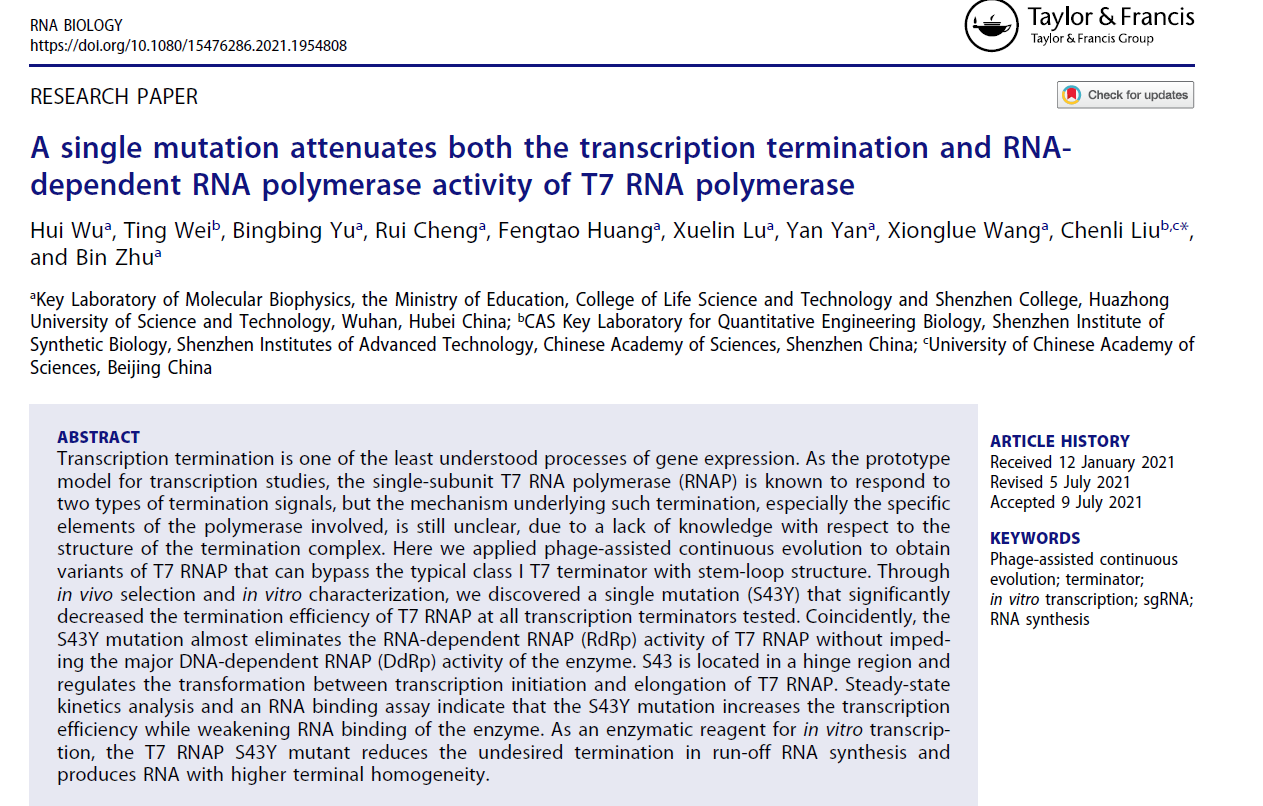On July 27, 2021, A research paper entitled "A single mutation attenuates both the transcription termination and RNA-dependent RNA polymerase activity of T7 RNA polymerase" was published in the journal "RNA Biology" by the team of Professor Bin Zhu from the college of Life Sciences of Huazhong University of Science and Technology and the team of Professor Chenli Liu from the Shenzhen Institutes of Advanced Technology of the Chinese Academy of Sciences.

This work was based on the directed evolution technology from the team of Professor Chenli Liu and the long-term research of single-subunit RNA polymerases from the team of Professor Bin Zhu, using phage-assisted continuous directed evolution to screen the core enzyme in the RNA field— T7 RNA polymerase mutants that are able to overcome the transcription termination signals. A single amino acid mutation S43Y was obtained, which significantly reduced the termination at two types of typical transcription termination. The mutation regulates the conformation of the enzyme during transcription elongation, which makes the transcription elongation complex more stable. The mutation also greatly reduces the ability of T7 RNA polymerase to bind to RNA products, abolishing the RNA-dependent RNA polymerase activity of the enzyme. Thus, a single mutation effectively reduces the two major by-products of in vitro RNA synthesis: terminated by-products caused by transcription termination and terminal-extension by-products caused by RNA-dependent RNA polymerase activity, providing an efficient and convenient solution to the demand of high-quality RNA in the rapidly developing RNA field.
PhD candidate Hui Wu from Huazhong University of Science and Technology and Assistant Professor Ting Wei from the Shenzhen Institutes of Advanced Technology are the co-first authors of this article; Professor Bin Zhu of the college of Life Sciences of Huazhong University of Science and Technology and Professor Chenli Liu from the Shenzhen Institutes of Advanced Technology are the co-corresponding author. This research was supported by the National Natural Science Foundation of China and the Shenzhen Science and Technology Innovation Fund.
Paper link: https://doi.org/10.1080/15476286.2021.1954808